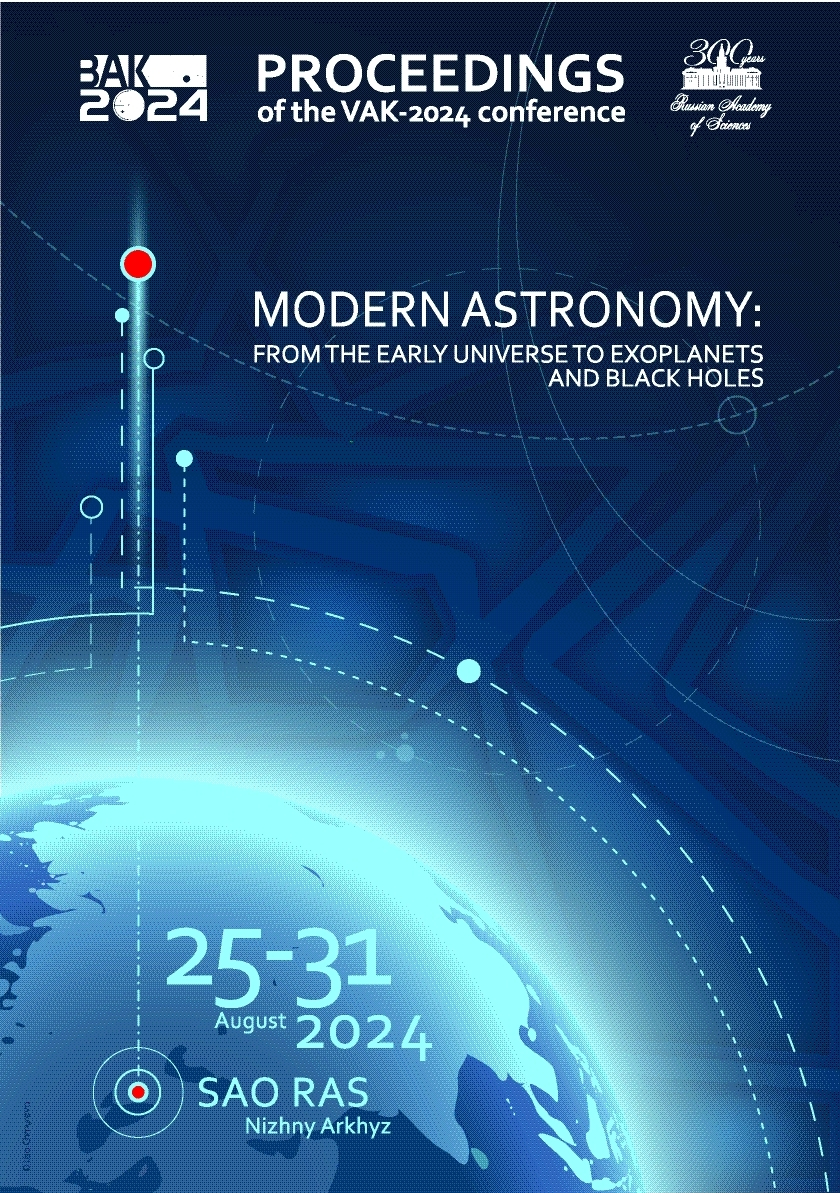Saint-Petersburg University
Chelyabinsk State University
UDC 53
UDC 520
UDC 521
UDC 523
UDC 524
UDC 52-1
UDC 52-6
CSCSTI 41.00
CSCSTI 29.35
CSCSTI 29.31
CSCSTI 29.33
CSCSTI 29.27
CSCSTI 29.05
Russian Classification of Professions by Education 03.06.01
Russian Classification of Professions by Education 03.05.01
Russian Classification of Professions by Education 03.04.03
Russian Library and Bibliographic Classification 2
Russian Library and Bibliographic Classification 223
Russian Trade and Bibliographic Classification 614
Russian Trade and Bibliographic Classification 6135
BISAC SCI004000 Astronomy
BISAC SCI005000 Physics / Astrophysics
We study the fossil large-scale magnetic field evolution in a turbulent accretion disk of young T Tauri star. The coefficient of turbulent viscosity is calculated according to the Shakura and Sunyaev model. The modeling is performed taking into account the weakening of the turbulence in the region of low ionization fraction ("dead" zone). The ionization structure is calculated taking into account thermal ionization, cosmic rays and radioactive elements, radiative recombinations and recombinations on dust grains. The magnetic field is calculated taking into account ambipolar diffusion. The simulations show that the magnetic field is frozen in gas and its strength is proportional to the gas surface density in the inner region of the disk, $R<0.2$ AU. The magnetic field strength increases from $10^2$ G to $10^3$ G in this region within 5 Myr. The outer boundary of the "dead" zone depends on the dust grain size and ranges from 30 AU for $a_g=0.1$ $\mu$m to 3 AU for $a_g=10^3$ $\mu$m. The size of the "dead" zone decreases with time. The magnetic field strength inside the "dead" zone remains practically constant at around $10^{-3}$–$10^{-4}$ G during the disk evolution.
stars: protoplanetary disks, magnetic fields, pre-main sequence
1. Dudorov A., 1995, Astronomy Reports, 39, 6, p. 790
2. Dudorov A. and Khaibrakhmanov S., 2014, Astrophysics and Space Science, 352, 1, p. 103
3. Khaibrakhmanov S., 2024, Astronomical and Astrophysical Transactions, 34, 2, p. 139
4. Khaibrakhmanov S. and Dudorov A., 2022, Astronomy Reports, 66, 10, p. 872
5. Pringle J., 1981, Annual Review of Astronomy & Astrophysics, 19, p. 137
6. Shakura N. and Sunyaev R., 1973, Astronomy & Astrophysics, 24, p. 337
7. Williams J. and Cieza L., 2011, Annual Review of Astronomy and Astrophysics, 49, 1, p. 67





